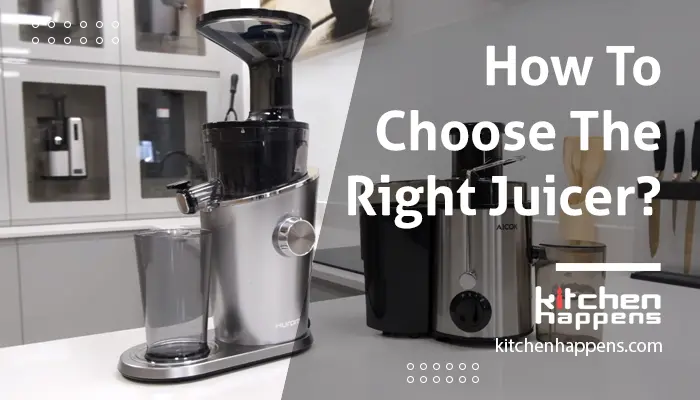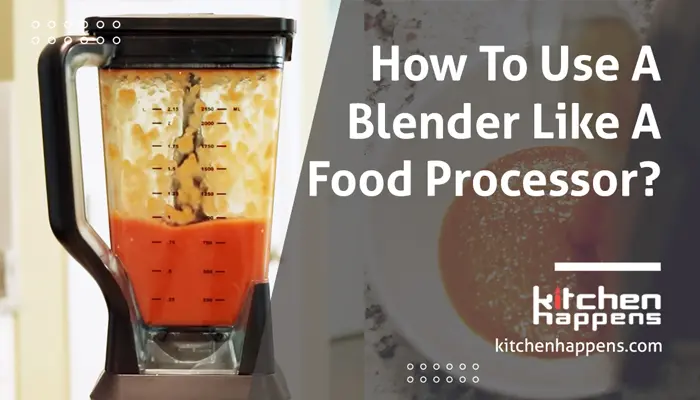Starting your day with a sip of fresh juice can lift your mood and energy. Drinking at least one glass of juice is a must for maintaining a healthy diet. Although you can easily go for store-bought juices, nothing can compare to the freshly squeezed preservative-free juices that you make at home.
And to make some tasty drinks from your favorite fruits and vegetables, you need to own a juicer. But how to choose the right juicer? This is the first question that will come to your mind when you think of buying a juicer.
Since there are varieties of juicers available in the market to choose from, it is pretty normal to need clarification about which one is appropriate for your specific needs. Budget is another crucial fact as you want to avoid being scammed with a high price product that doesn’t even match your demand.
So, here I am to help you out choosing the right juicer with proper buying guidelines. Now, the first step is to learn about different types of juicers and their features with pros and cons.
Types of Juicers With Their Pros & Cons
Identifying the slight differences between the various juicers on the market can be difficult. And to make matters even more challenging, marketing teams of different brands frequently use terms for advertising purposes. That’s when you need clarification about whether to buy this or that.
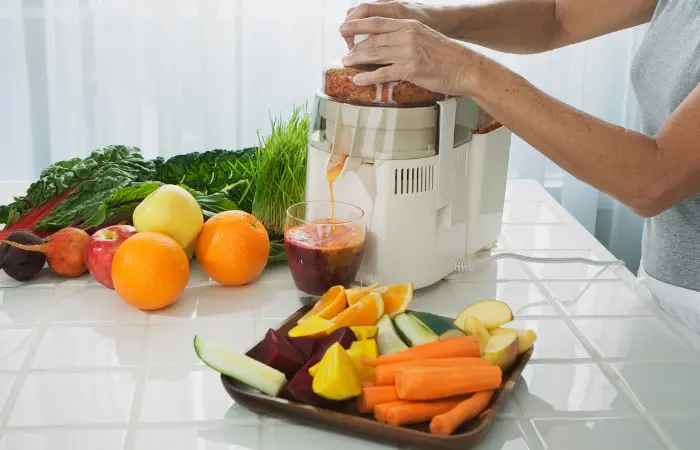
However, not all juicers are the same. In fact, there are five different types of regularly used juicers, each with unique advantages and disadvantages.
So, here I am discussing each type so that you can understand which one will suit your requirement most.
1. Centrifugal Juicer
These juicers are the most common and popular type on the market. The reason is they work fast and can produce great-tasting juice. It has a feed tube, a plunger to push items, and quickly spinning blades that grind up produce.
The blades crush the food item into pulp, and centrifugal force causes the pulp to be thrown from the platform into a tray at the edge of the juicer. And the pressed juice goes through another set of blades to ensure that all of the liquid is extracted.
Centrifugal juicers work best in juicing hard fruits and vegetables like carrots, apples, cucumbers, and beets.
Although these juicers work fast, they tend to produce a lot of foam that many consumers find unappealing. Also, the produced juice is not as healthy as with other juicer types because the blades move too fast to extract every nutrient from the fruit.
However, centrifugal juicers are lightweight, easy to set up, and clean, as they come with removable dishwasher-safe parts. If you are just getting into juicing, centrifugal juicers can be a cost-effective option too, since you can get a decent model of this juicer at around $50.
Pros
- Inexpensive
- Quickly produce juice
- Often can juice whole fruits and vegetables, reducing food preparation time
- Easy to clean and disassemble
- Takes minimal space on the countertop
Cons
- Some models can be noisy/loud
- Juice has fewer nutrients and lots of pulp
- Juice yields are lower
- Juice separates and degrades quickly; it’s preferable to consume fresh juice immediately.
- Doesn’t do well with leafy greens and only processes produce
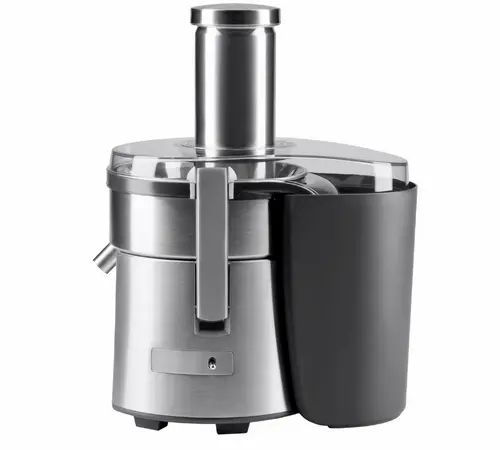
2. Masticating Juicer
Whether it comes to juicing process, time, or nutrients, there are loads of differences between masticating and centrifugal juicers. If you are in a hurry to make juice in the morning, then you must skip masticating juicers as it is much slower than the centrifugal ones. That’s why it is also called a slow juicer.
However, even though masticating juicers take more time to juice, they win over centrifugal by providing maximum nutrients in the final extracted juice. Also, these juicers don’t heat up, which helps to preserve more nutrients.
They use augers with sharp metal teeth to mimic chewing fruits and vegetables. Then, they press the maximum amount of juice from the pulp, which gives you high yields. Since no air is added to the juice, it results in little foaming or oxidization. So, you can make a big batch of juice using a masticating juicer and store it in the fridge.
Another benefit of these juicers is that they allow you to juice leafy greens such as spinach, wheatgrass, and kale. So, if you are more interested in making green drinks, don’t even bother with a centrifugal and choose to masticate without a second thought.
Moreover, these juicers are quieter and function at a low hum. But they are relatively more expensive than centrifugal, and you have to consider paying more than $200.
Now, how to choose the best masticating juicer? Besides considering the above benefits, you have to consider a few characteristics.
Masticating juicers are available in two varieties, vertical and horizontal. Both work slower, but vertical ones take up less counter space, work a little faster, and look nice. On the other hand, horizontal ones make the best-quality juice compared to any other juicers in the market.
Pros
- Suitable for juicing leafy greens
- Higher juice yields
- Keeps more nutrients in your juice
- Versatile as you can make other things like sorbets with frozen fruits, nut butter, and baby food
- Less oxidation means the longer shelf life
- Quieter than the other types of juicers
Cons
- More expensive
- slower juice extraction
- Since many masticating versions have small chutes, more meal preparation time is needed.
- Relatively larger in design that takes more counter space
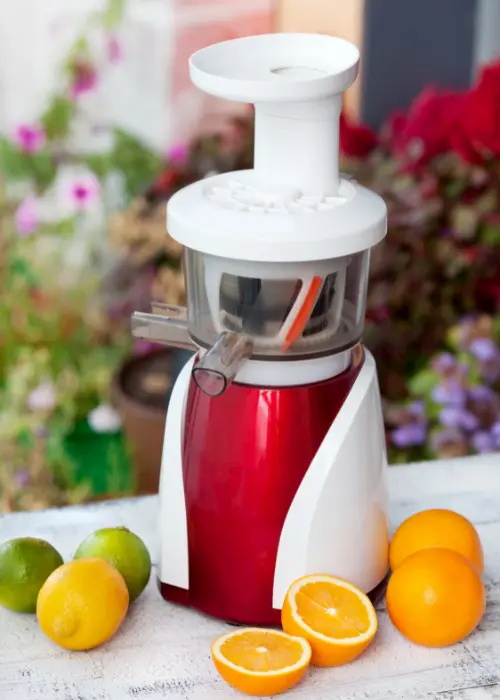
3. Triturating Juicer
The triturating juicer is also called a twin-gear juicer because it has two internal gears to grind the inserted food between them. The twin gears sit tightly and rotate to crush and then grind fruits into fine particles. Therefore, you will get every drop of juice out of your food bits, leaving a very dry lump of pulp or rind.
Whether you want to juice leafy greens like kale or wheatgrass, every type of thin food will get crushed better by this type of juicer than with the other kind of juicer. Although these juicers are particularly great with leafy greens and hearty vegetables, you can also use them to smash and juice out of soft fruits.
Moreover, these juicers can also perform other tasks like grinding foods like nut butter and seeds and making ground coffee and bases for fruit sorbets.
By the way, just like masticating juicers, triturating juicers are also quieter, so there will be no loud noise!
Now, if you find these juicers most fitting to your needs, be prepared to invest. With prices of $400 and upwards, this type of juicer is the most expensive due to the expensive manufacturing costs of the closely fitting metal gear system.
Pros
- Juice lasts longer
- Units tend to operate quietly
- Provides nutrient-rich juice.
- high yield of juice is produced for the number of fruits and vegetables used
- A wide range of fruits and vegetables can be juiced
- Highly durable
Cons
- Expensive
- Relatively difficult to clean.
- Slower compared to other varieties of juicers.
- Heavy and large, so they take up a lot of counter space
- Fruit must be chopped up before adding inside it
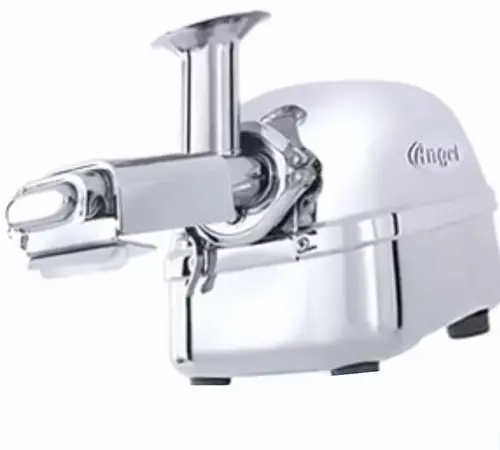
4. Manual Press Juicer
These juicers are not electric. Instead, you have to insert the fruits inside of it and strongly press a lever to crush everything. The fruit is squeezed against a sieve by a plunger that is pushed down by the lever. Only the juice flows out the bottom because the fine mesh filter prevents the pulp and rind from coming through.
As you can see, this type of juicing machine is the easiest to use out of all the available options, but of course, it will take your labor to work.
By the way, it is mostly seen as a tool to extract citrus fruit juice because halved citrus fruit has a shape that makes it particularly easy for it to stay in position on a manual press juicer. So, it is also referred to as a citrus juicer.
But if the juicing device includes a lip around the edge to prevent the fruit from spilling out, it can also be used for nearly any juicy fruit, such as mangoes, watermelons, and tomatoes.
Pros
- Easy to use and clean
- Extremely portable and takes little counter space
- Affordable models are available
- Quiet operation
Cons
- Can’t juice hard fruits like carrots and apples
- The juicing process can be tiring
- In low-end models, spilling juice or fruit might be an issue.
- Not suitable for juicing large quantities
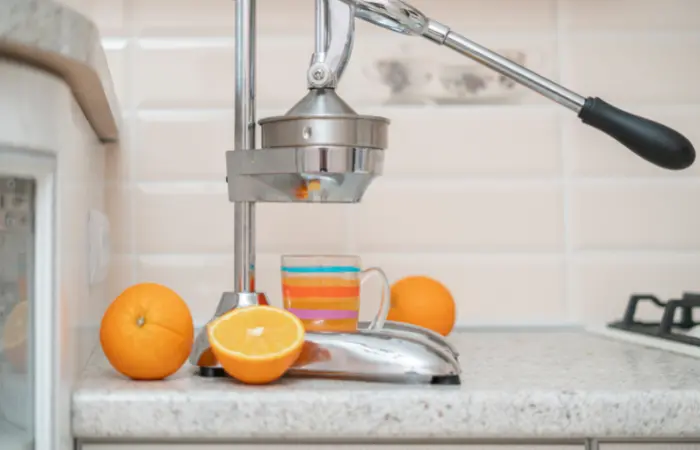
5. Steamer Juicer
Unlike other types of juicers, steamers focus on producing fruit juice that will be consumed later rather than juice that would be drunk immediately. These juicers completely kill off nearly all of the fruit’s enzymes during the steaming process; that’s why the produced juice has an extended shelf life.
However, it also destroys a lot of health benefits that are supposed to be in fruit juice. But you have an advantage as the final outcome is a highly concentrated fruit juice that you can store for a long time (even without refrigeration) and pull out anytime to make fresh slushies, other drinks, or jams.
One important thing you need to keep in mind is that since the juice is extracted using steam, it is initially hot, so you should let it cool down before using it.
Pros
- The juice lasts for a long time
- Produces concentrated juice
- Easy to use
- And also operated quietly
Cons
- Kills off most of the nutrients in the juice
- Can’t produce juice from hard food like beets and carrots
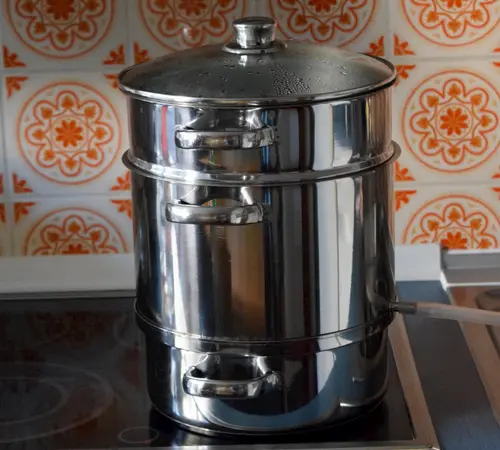
Finally, you have gained enough knowledge on every type of juicer. But is it enough for you to decide which one to buy? Absolutely no!
When choosing the best juicer to buy, you must decide on various things first. And that’s what I am going to guide you on now.
How to Choose The Right Juicer for You?
Before going to the market to buy a juicer, you should consider a few essential things. You may end up stuck with an appliance that is only effective at a single task or face issues further you didn’t anticipate.
So, to ensure you choose the right juicer, consider asking yourself the following questions first and then proceed.
Decide What Juicer You Need and How Much You Will Spend
A large part of your confusion will be removed if you can decide on which type of juicer you will go for. I have already discussed every type, and I think you have a clear vision of them now. So, make sure to figure out which one goes with your requirement the most.
The price is another thing you need to focus on, as different types have different price ranges. Juicer’s prices vary widely. You can go for a budget-friendly option costing as little as $40 or high-end ones close to $1500.
With the cost difference, it’s evident that these juicers have different capabilities as well as target customers. And one of the reasons behind this vast price difference is that some can handle a few foods successfully while others can juice both fruit and vegetables, whether they are leafy, soft, or hard. So, this is the next factor you should think of.
What Will You Be Juicing?
It’s significant to have a clear idea of the food types you plan to juice because this can affect the type of juicer you should buy.
For your better understanding, I break down produce into three categories: soft, hard, and leafy greens.
Soft food includes oranges, apples, cucumbers, and celery. On the other hand, carrots, beets, and sweet potatoes are examples of hard produce. And lastly, leafy greens include wheatgrass, spinach, and kale.
Now, based on my analysis, masticating juicers are best suited for extracting the maximum amount of juice from leafy greens. But if you love juicing hard foods like carrots, then go for high-speed centrifugal models.
However, if all you want is a simple glass of orange juice to pair with your breakfast, a manual citrus juicer can be what you need. Just be informed that these presses are specifically designed for citrus. So, if you want to try a different type of juice, stick to a full-size model like a triturating juicer.
How Often Will You Make Juice, And in What Quantity?
Frequency of use will influence other factors, such as design, size, weight, and durability, as well as how much money you should spend.
For example, if you are new to juicing and unsure about whether you will enjoy the process, you shouldn’t invest much in one of the best models. Instead, go for a model with a reasonable price tag.
But if you are experienced with juicing or know you will be preparing juice frequently, it’s safer to spend more money on a better device. Most high-end juicers are constructed with superior quality components, deliver excellent performance, and have more extended warranties.
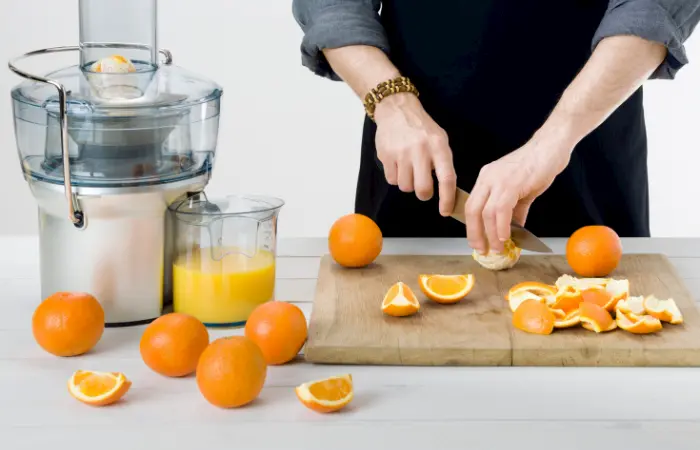
High-end models are also great at handling the mass amount of juicing, so if you make large batches of juice, opt for a quality machine over a cheap one.
How Much Food Preparation Time Will You Invest?
Food preparation time is a major concern for people with busy schedules. Since triturating and manual juicers require you to cut fruits that are obviously time-consuming, they are not even on the list of considerations. So, your bet will be on masticating or centrifugal.
Now, masticating juicers are much slower than high-speed centrifugal juicers. But masticating produces the highest quality juice in terms of nutrients. So, if you are willing to sacrifice quality over your time, centrifugal should be your pick.
However, if juice quality is your top priority and you plan to juice mostly vegetables and leafy greens, a masticating juicer is by far the best option. The sad part is that a masticating juicer takes 60-100% more time to juice than a high-speed centrifugal juicer.
For instance, a masticating juicer will take roughly 5-7 minutes to produce 500 ml of juice, whereas a centrifugal juicer would take only 3-4 minutes (although you will have a lot more waste!)
Where Will You Store Your Juicer?
The best reminder for you to use your new juicer is to set the machine on your countertop. Doing so will also give you more flexibility while using the gadget.
However, countertop space is indeed valuable in the kitchen, and placing your new machine isn’t always possible because of interference from other appliances or a lack of counter space. Therefore, when choosing a model, consider your kitchen’s design, especially the placement of electrical outlets.
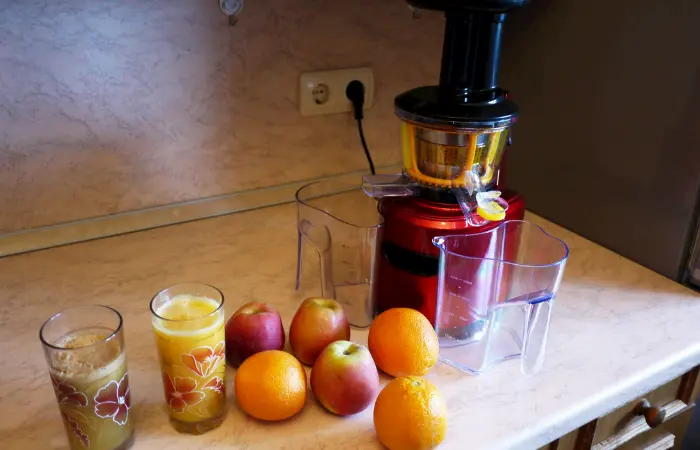
To determine how everything will fit, measure the area you intend to use and compare those dimensions to the product specs.
On the other hand, if you don’t want to place it outside, think about the juicer’s size and weight for storage purposes. If the juicer is too bulky, it may not fit in your cabinet, and if it is heavy, you may feel the hassle of taking it in and out.
In short, decide where you will put your device, measure your selected area, and then compare it to the product specs. Otherwise, you may face issues storing your juicer.
Until now, I discussed the initial consideration that you should take into account according to your own requirement. But, when it comes to choosing a juicer model, some product features will help you to make the correct decision. And that’s what my next section is all about.
10 Features to Consider When Buying A Juicer
While looking for the answer to how to choose the best juicer, there are many other factors you need to take into account. So, keep these 10 features in mind while shopping for your juicer.
1. Speed & Noise
Make sure your juicer’s speed and noise level are appropriate for your lifestyle. If you don’t want to disturb your family members, choosing masticating juicers will be best as it is much quieter than centrifugal.
But, if you need to juice fast in the morning, speed might be a concern since masticating is slower. Models of juicers with different speeds are useful since they squeeze the most juice possible from your produce.
While high speeds are better for firmer foods like apples and carrots, slow juicer speeds are ideal for juicing soft fruits like grapes and strawberries. So, if a juicer has different speed settings, it will be much more helpful in juicing different types of produce.
2. Convenience of Use & Cleanup
If your juicer is easy to assemble, use, disassemble, and clean, you will feel more comfortable using it. Complicated juicers are likely to be left at the bottom of your cabinet. But, if you want a multipurpose juicer that also produces nut butter, sorbets, or baby food, it can be worth a little extra assembling.
Juicers with external pulp bins let you juice in large quantities without stopping to take out the pulp. Lastly, some juicers are difficult to clean. So, opting for a dishwasher-friendly model with specialized brushes to make hand cleaning easier is always a steal.

3. High Juice Yield & Dry Pulp
The juice yield is a way to measure the quality and quantity of a juicer. Different juicers provide different quantities of juice for the same amount of produce.
If you want to get a high yield, a triturating juicer will be your best bet. It produces the highest juice yield leaving very dry pulp. On the other side, centrifugal gives the lowest yield, resulting in the wettest pulp.
4. Health Benefits
All juicer types and models do not equally preserve the health benefits of the produce. Both manual press and triturating juicers are good at creating nutrient-rich juice.
On the contrary, steamers remove most of the product’s health benefits but significantly extend the juice’s shelf life.
5. Feed Chute Size
The ability to juice whole foods like apples and other fruits and vegetables is essential for people who want to cut down the preparation time involved in chopping them.
Most centrifugal juicers include large feed chutes for entire apples and other fruits. And the feed tube on most masticating juicers is normally smaller (usually 4 cm), which minimizes overfeeding and meets EU safety regulations (preventing children from sticking their hands down the chute!).

However, with masticating juicers, your prep time is often slightly increased; I only need to chop apples, beets, and large carrots. The good news is, nowadays, some masticating juicers have a 2-step feed tube that can accept whole pieces of fruit like apples.
6. Versatility
Regarding versatility, some masticating models can perform various tasks other than juicing. As you already know, they can be used to make smoothies, frozen sorbet, soya, and almond milk, and even baby food. Note that extra capabilities come with a higher price tag; hence only consider it if you intend to do these tasks.
But, if you want to stick to only juicing, centrifugal or manual press juicers that are more budget-friendly are best for you.
7. Design & Durability
Juicers come in various designs to meet users’ demands. Typically, juicer bases are made of either plastic or stainless steel.
While plastic ones are lighter in weight and affordable, they are not as durable as stainless steel ones. Also, plastic corrodes soon. The natural salts and acids in juice gradually damage the machine’s gears with continuous use.
Therefore, you will have to inspect your device regularly and clean every part. But the stainless steel ones won’t corrode any sooner and are excellent for rough use as well as easy to clean.
8. Additional Accessories
Make sure to read the product description to know what accessories come with the juicer and whether they can be purchased separately. So, when any of the parts break, you can replace them.
9. Value for Money
After setting a price range for your purchase, you should also check whether the specific juicer is worth the price or not. Sometimes, the price tag may lead you to think that the juicer is good, but it turns out otherwise.
I suggest you go through various user reviews for the model. That way, you will know whether the juicer is worth the price and buying.

10. Warranty
Last but not least, be sure to check the warranty. According to the type, juicers have varying warranties. Most of the high-speed centrifugal juicers come with around 1 to 5 years of warranties because the motors may burn out.
In contrast, most of the masticating juicers have extensive 10 years or more domestic warranties on the motor and 5 years or more on the parts.
Additionally, verify the warranty’s coverage details of various parts and the locations where it is serviced.
Popular Brands of Juicers & Their Specialities
There are many high-quality juicer brands available on the market. In order to help you get a clear idea of what to expect from the products of each, I went through juicer consumer reviews to see what kind of reputation the top juicer brands have.
So, here are six of the most well-known brands on the market.
Hurom
Hurom makes one of the best cold press juicers (also known as masticating or slow juicer) on the market price-wise. Customers generally give them very positive ratings, but there are also some complaints from people who demand more from expensive juicers, especially when it comes to juicing tough ingredients like leafy greens.
Breville
One of the most recognizable brands is Breville, and its online reviews are consistently positive. Centrifugal juicers are their specialty, but they also have a few masticating juicer models. Since they sell a variety of different juicers, you should check the reviews for the devices before making a choice.
Dash
Dash offers both cold press and centrifugal juicers at lower prices than other comparable products. Many consumers are happy to find a usable juicer at such a reasonable price, and reviews are fairly mixed, leaning more toward the good.
Metrokane
Metrokane is widely recognized for its manual juicers (often listed as OJ juicers). Their juicers are excellent if you are seeking a basic and inexpensive citrus juicer. Reviews are mostly mixed. Still, most users are happy with the juice their Metrokane juicers produce.
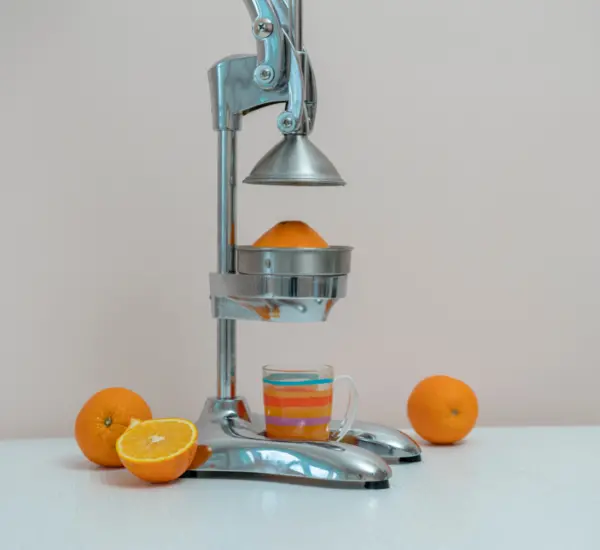
Kuvings
Kuvings offers high-end juicers that have received positive online reviews. Their most famous juicers are cold press models. Some of the impressive features of their masticating models are low noise, multifunctional, extra wide feed chute, and more extended warranty.
Tribest
Tribest is known for providing quality kitchen appliances that include juicers. Although they sell different types of juicers, their Greenstar triturating (aka twin gear) juicers are specifically praiseworthy.
Final Verdict
Buying juicers has grown worldwide because people now prefer to make juice at home for a healthy lifestyle over store-bought ones. And hopefully, my well-detailed guide on how to choose the right juicer will help you to make the final decision.
Indeed, no matter which juicer you end up buying, you will be pleased with the flavor of freshly squeezed juice.
Frequently Asked Questions
How many watts should a good juicer have?
Most juicers come between 400 and 1,000 watts, but 700 and up is considered the best, enough to cut through tough rinds and juice effectively. A juicer with higher power can be used more frequently without breaking, and it will let you use fruits and vegetables without cutting them into little bits.
On the other hand, cold press juicers only require about 200 watts, but it doesn’t mean they can’t perform the job. Their reduced wattage prevents the motor from warming up the fruit while you juice it, resulting in ice-cold fruit juices.
What fruits should not be mixed while juicing?
It is advised not to mix your honeydews, cantaloupes, watermelons, or muskmelons with other fruits. Avoid combining sweet fruits like bananas and raisins with acidic fruits like grapefruits and strawberries and sub-acidic items like apples, pomegranates, and peaches for better digestion.

